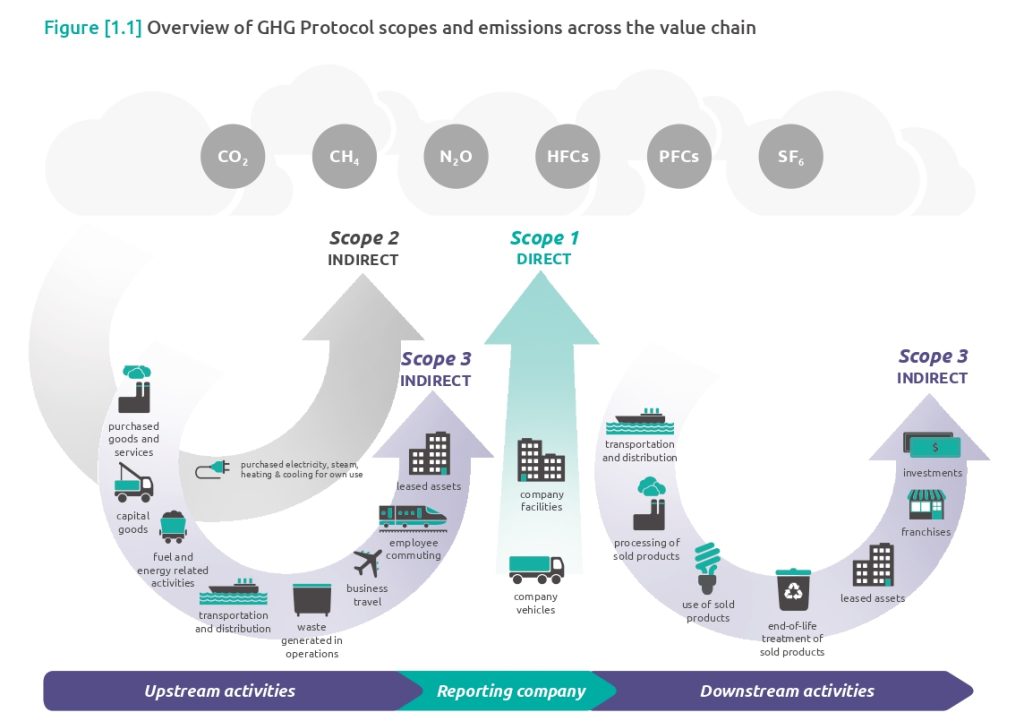Carbon emissions are defined by the Greenhouse Gas Protocol in terms of Scopes.
Scope 1 emissions are released when an organization actively combusts fossil fuels, for example in a gas boiler in an office facility, in a diesel-powered vehicle fleet, or an on-site generator.
Scope 2 emissions result from the combustion of fossil fuels in power stations. Organizations are responsible for these when they consume electricity from their local grid.
Scope 3 emissions are those that a company is indirectly responsible for. For example, emissions generated from the production of purchased goods and services, during business travel or commuting, and in the use and disposal of products by customers. Even when an organization is not directly combusting fuel – or, paying for that combustion – it is still causing carbon to be emitted into the atmosphere through the operational decisions it makes. Scope 3 emissions contribute, on average, 75% of an organization’s emissions, rising to almost 100% of emissions for service-based industries (WRI, 2022). Because of this, Scope 3 emissions are increasingly being targeted in emissions reporting legislation.

Tailpipe measures an organization’s Scope 3 emissions from the consumption of cloud computing services. These Scope 3 emissions can be divided into operational and embodied emissions:
Operational Emissions – from the energy needed to power the cloud computing equipment within cloud service providers’ data centers.
Embodied Emissions – from mining, manufacture, transport and disposal of the hardware that provides cloud services.
So, the data that you receive from Tailpipe should be used to gain an accurate picture of the carbon impact that your organization is having across its entire value chain. It can be used for Scope 3 emissions reporting, whether mandatory in your country or not. If you’d like to find out more about the impact of cloud computing on your Scope 3 emissions, get in touch with the Tailpipe team here.




